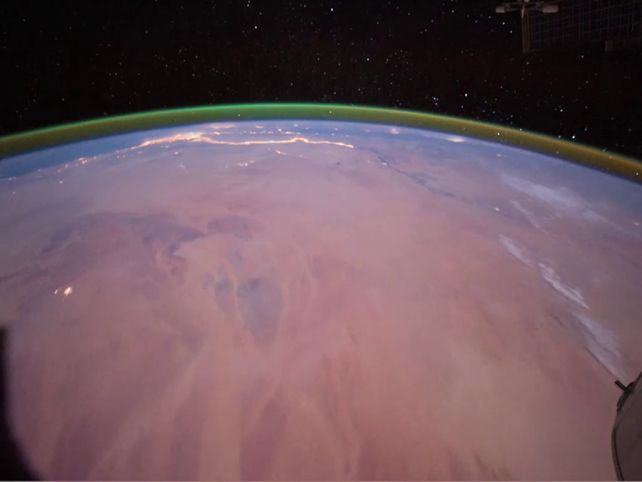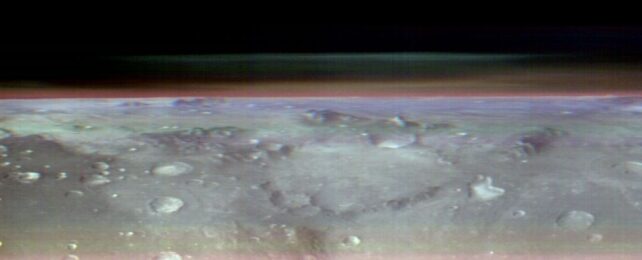Astronauts visiting the alien skies of the red planet might one day feast their eyes on a view like the one above.
It's a new image of the horizon of Mars, snapped by NASA's Odyssey orbiter as it looped its way around the planet, from an altitude of about 400 kilometers (250 miles) – similar to the average altitude of the International Space Station, here at Earth.
The picture is an achievement that took months to coordinate, and scientists say that it will allow them to compare Mars to Earth by looking at similar photos taken from the ISS.
"If there were astronauts in orbit over Mars, this is the perspective they would have," says astronomer Jonathon Hill of Arizona State University. "No Mars spacecraft has ever had this kind of view before."
The image was captured using Odyssey's Thermal Emission Imaging System, or THEMIS, and the main reason it took so long to coordinate is because THEMIS is in a fixed position on the orbiter, and points straight down at Mars from the belly of the spacecraft.
That's because THEMIS is used for mapping the Martian surface… usually, anyway.

To see the Mars horizon, scientists here on Earth had to send commands to physically tilt the entire Odyssey orbiter 90 degrees, pointing THEMIS at the direction of the rim of the horizon.
They also had to keep the spacecraft that way for an entire orbit so that THEMIS had time to take the series of 10 images that were stitched together to create the panorama.
It was nailbiting. The best position had the spacecraft's antenna pointed away from Earth for the duration, which meant that Odyssey was out of contact with Earth for the hours the project took.
The result, however, was worth the time and effort. The dry, crater-pocked surface of Mars rolls out in the foreground, a fascinatingly alien landscape. And above, the delicate, tenuous atmosphere of Mars floats, with wisps of cloud and dust haze suspended therein.

Because THEMIS is a thermal camera, its data can reveal the temperature of its subjects, which in turn can help study the clouds.
Mars has water ice clouds, like Earth does (and very pretty clouds they are too), but it also has carbon dioxide ice clouds that form when atmospheric conditions are right. Studying these clouds can give us insights into how the Martian atmosphere works.
While it was pointed towards the horizon, THEMIS also snapped a photobomber – Mars' potato-shaped moon, Phobos.

Phobos has an orbit of 7.65 hours around Mars, and scientists don't know where it came from – whether it was a passing asteroid that Mars hoovered into its gravity field, or whether it was once a chunk of Mars.
Every bit of information we get about the little moon is a piece of data that scientists can use to probe this mystery.
Now that Odyssey has shown that it can walk the walk, the researchers hope to take more images of the Martian horizon during different times of the year, to see how the atmosphere changes with the seasons. Maybe we'll even get a glimpse of Mars' elusive green nightglow. Here's hoping.
